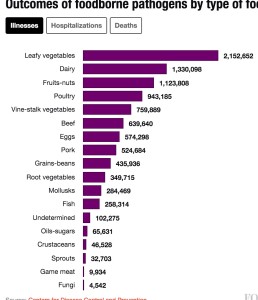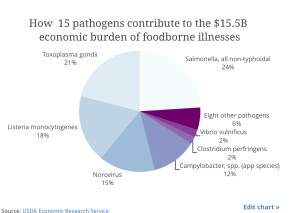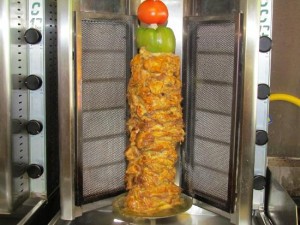Neil deGrasse Tyson writes, if you cherry-pick scientific truths to serve cultural, economic, religious or political objectives, you undermine the foundations of an informed democracy.
 Science distinguishes itself from all other branches of human pursuit by its power to probe and understand the behavior of nature on a level that allows us to predict with accuracy, if not control, the outcomes of events in the natural world. Science especially enhances our health, wealth and security, which is greater today for more people on Earth than at any other time in human history.
Science distinguishes itself from all other branches of human pursuit by its power to probe and understand the behavior of nature on a level that allows us to predict with accuracy, if not control, the outcomes of events in the natural world. Science especially enhances our health, wealth and security, which is greater today for more people on Earth than at any other time in human history.
The scientific method, which underpins these achievements, can be summarized in one sentence, which is all about objectivity:
Do whatever it takes to avoid fooling yourself into thinking something is true that is not, or that something is not true that is.
This approach to knowing did not take root until early in the 17th century, shortly after the inventions of both the microscope and the telescope. The astronomer Galileo and philosopher Sir Francis Bacon agreed: conduct experiments to test your hypothesis and allocate your confidence in proportion to the strength of your evidence. Since then, we would further learn not to claim knowledge of a newly discovered truth until multiple researchers, and ultimately the majority of researchers, obtain results consistent with one anther.
This code of conduct carries remarkable consequences. There’s no law against publishing wrong or biased results. But the cost to you for doing so is high. If your research is re-checked by colleagues, and nobody can duplicate your findings, the integrity of your future research will be held suspect. If you commit outright fraud, such as knowingly faking data, and subsequent researchers on the subject uncover this, the revelation will end your career.
It’s that simple.
This internal, self-regulating system within science may be unique among professions, and it does not require the public or the press or politicians to make it work. But watching the machinery operate may nonetheless fascinate you. Just observe the flow of research papers that grace the pages of peer reviewed scientific journals. This breeding ground of discovery is also, on occasion, a battlefield where scientific controversy is laid bare.
Science discovers objective truths. These are not established by any seated authority, nor by any single research paper. The press, in an effort to break a story, may mislead the public’s awareness of how science works by headlining a just-published scientific paper as “the truth,” perhaps also touting the academic pedigree of the authors. In fact, when drawn from the moving frontier, the truth has not yet been established, so research can land all over the place until experiments converge in one direction or another — or in no direction, itself usually indicating no phenomenon at all.
Once an objective truth is established by these methods, it is not later found to be false. We will not be revisiting the question of whether Earth is round; whether the sun is hot; whether humans and chimps share more than 98 percent identical DNA; or whether the air we breathe is 78 percent nitrogen.
The era of “modern physics,” born with the quantum revolution of the early 20th century and the relativity revolution of around the same time, did not discard Newton’s laws of motion and gravity. What it did was describe deeper realities of nature, made visible by ever-greater methods and tools of inquiry. Modern physics enclosed classical physics as a special case of these larger truths. So the only times science cannot assure objective truths is on the pre-consensus frontier of research, and the only time it couldn’t was before the 17th century, when our senses — inadequate and biased — were the only tools at our disposal to inform us of what was and was not true in our world.
Objective truths exist outside of your perception of reality, such as the value of pi; E= m c 2; Earth’s rate of rotation; and that carbon dioxide and methane are greenhouse gases. These statements can be verified by anybody, at any time, and at any place. And they are true, whether or not you believe in them.
Meanwhile, personal truths are what you may hold dear, but have no real way of convincing others who disagree, except by heated argument, coercion or by force. These are the foundations of most people’s opinions. Is Jesus your savior? Is Mohammad God’s last prophet on Earth? Should the government support poor people? Is Beyoncé a cultural queen? Kirk or Picard? Differences in opinion define the cultural diversity of a nation, and should be cherished in any free society. You don’t have to like gay marriage. Nobody will ever force you to gay-marry. But to create a law preventing fellow citizens from doing so is to force your personal truths on others. Political attempts to require that others share your personal truths are, in their limit, dictatorships.
Note further that in science, conformity is anathema to success. The persistent accusations that we are all trying to agree with one another is laughable to scientists attempting to advance their careers. The best way to get famous in your own lifetime is to pose an idea that is counter to prevailing research and which ultimately earns a consistency of observations and experiment. This ensures healthy disagreement at all times while working on the bleeding edge of discovery.
In 1863, a year when he clearly had more pressing matters to attend to, Abraham Lincoln — the first Republican president — signed into existence the National Academy of Sciences, based on an Act of Congress. This august body would provide independent, objective advice to the nation on matters relating to science and technology.
Today, other government agencies with scientific missions serve similar purpose, including NASA, which explores space and aeronautics; NIST, which explores standards of scientific measurement, on which all other measurements are based; DOE, which explores energy in all usable forms; and NOAA, which explores Earth’s weather and climate.
These centers of research, as well as other trusted sources of published science, can empower politicians in ways that lead to enlightened and informed governance. But this won’t happen until the people in charge, and the people who vote for them, come to understand how and why science works.
Neil deGrasse Tyson, author of Space Chronicles: Facing the Ultimate Frontier, is an astrophysicist with the American Museum of Natural History. His radio show StarTalk became the first ever science-based talk show on television, now in its second season with National Geographic Channel.











